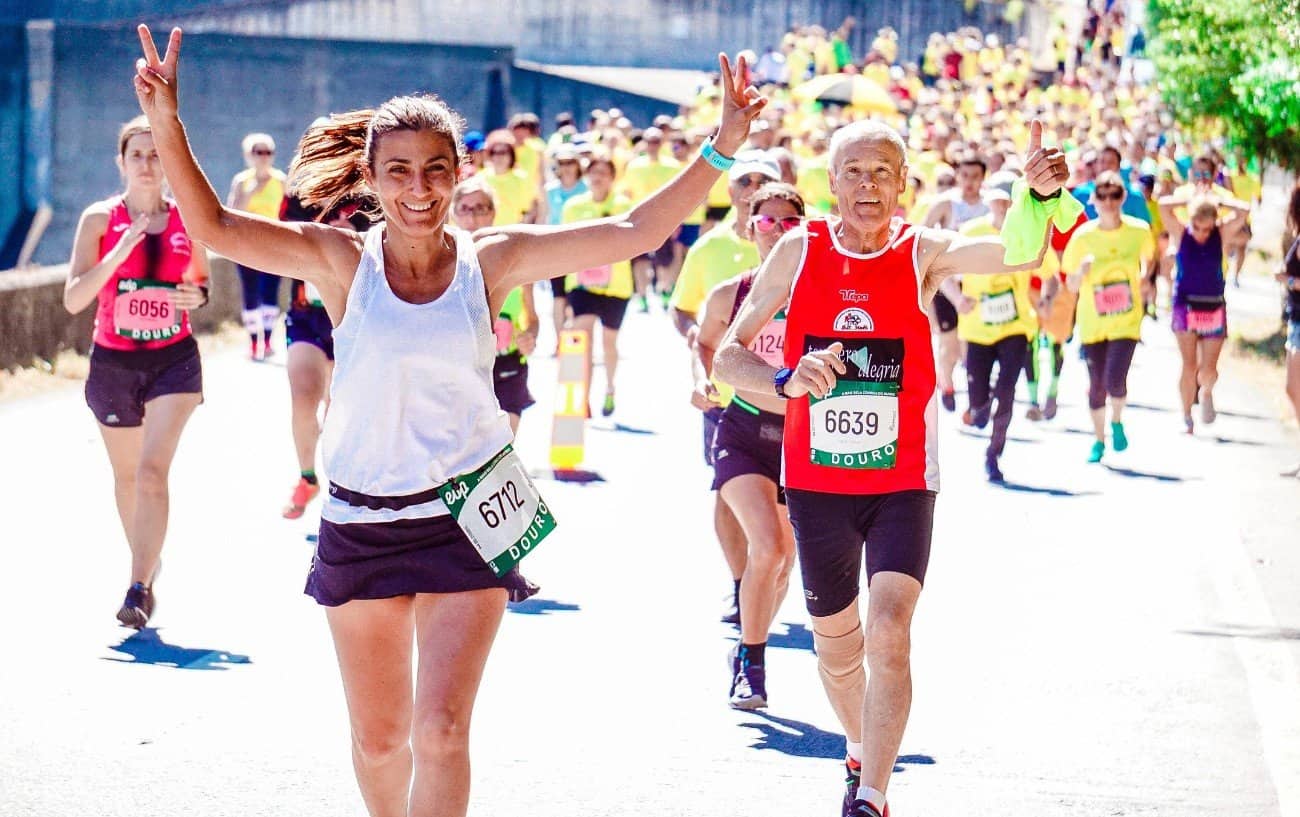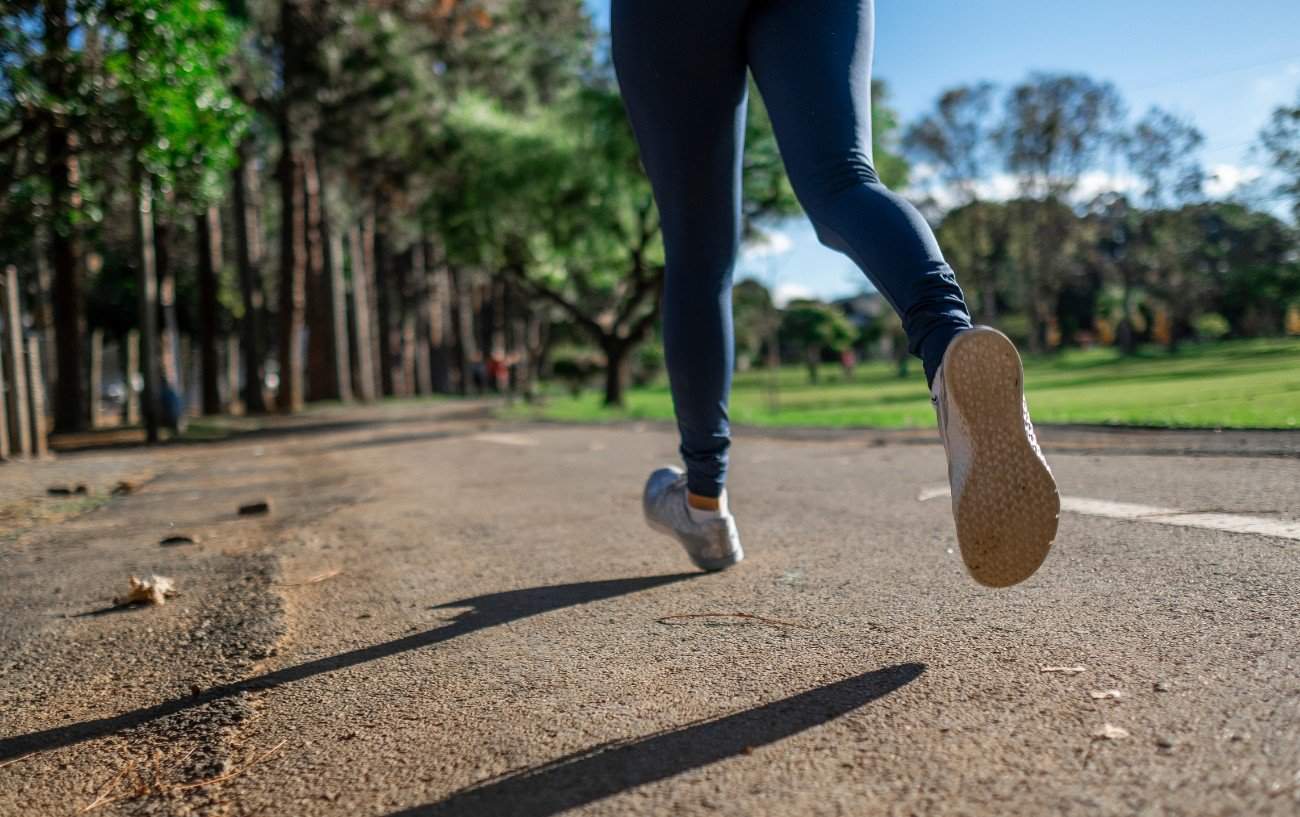Some runners dream of qualifying for Boston, or running the New York and London marathons, some may even want to attempt Everest, but there are so many other exciting race distances and time to strive for, such as the one mile race.
There is something magical about the mile.
Often considered the blue-ribbon event in athletics, the mile has caught the imagination of track athletics fans ever since Sir Roger Bannister ran 3:59:40 at Iffley road track, in Oxford, England, on May 6, 1954.
He was the first person to break the once-impossible-believed feat of running the first sub-four-minute mile.
What does running a 4-minute mile feel like? Well, imagine you were to jump on a treadmill, set the pace to 15mph or 24 km/h, and attempt to stay on the treadmill for the next 240 seconds! That’s what running a 4-minute mile would be like.
In this guide, we will discuss the training, preparation, and characteristics of the individual who is pursuing breaking the four-minute barrier.

It is clear that running a sub-4-minute mile is by no means an easy feat and is a major achievement denied to most athletes.
Normally, those runners who can count on having the talent, physiological makeup, consistent training, and a combination of the right conditions are the ones who have been able to do it.
Some runners just dip under the mile and others can take a massive chunk of their PB to do it.
For example, American John Buckner went from 4:02 to 3:53 in one race. The famous Scottish middle-distance runner Gordon Pirie achieved it by the closest of margins (a tenth of a second) in a championship race against the great Herb Elliot.
British runner Chris Chataway also came in just under the gun.
Others, such as the runner Steve Scott (USA), managed to run over 100 times inside the time. And how can we not mention Prefontaine, 3:54.
What Are The Physiological Characteristics Of The Mile?
The mile event is a 50% aerobic and 50% anaerobic activity. When moving from an aerobic to an anaerobic state, your body will start to fatigue with the onset of lactic acid.
Thus, the athlete looking to get there will need to commit to training their body to be both aerobically fit and to have the ability to cope with the accumulation of lactic acid in their muscles.
Lactate tolerance is a key factor in their potential over the mile distance.
Taking the aerobic element first, leading physiologists agree that the oxygen uptake (VO2 max) is best improved by work in the range of 80-100% of the VO2 max.
The importance of having a high VO2 max is sometimes overlooked. Sub-four milers must acquire a VO2 max that exceeds 70mls/kg/min.1Ferri, A., Adamo, S., La Torre, A., Marzorati, M., Bishop, D. J., & Miserocchi, G. (2011). Determinants of performance in 1,500-m runners. European Journal of Applied Physiology, 112(8), 3033–3043. https://doi.org/10.1007/s00421-011-2251-2
Based on Frank Horwill’s 5 paces model (% of aerobic state), jogging (100%) and marathon speed (95%) would be referred to as pure aerobic running.
However, the following paces would also be considered predominantly aerobic running: 10km speed – 90%, 5km speed – 80%, and 3km speed – 60%.

So, in addition to slow aerobic running, long runs, and foundation runs at marathon speed, the athlete needs to build around 20% of their running in the 80-100% zone into their schedule.
One of the most effective ways to improve lactate tolerance is by running tempos.
The appropriate pace for tempo runs is at the point where your body changes from working aerobically to working anaerobically, which is sometimes known as the anaerobic threshold.
Someone looking to run a sub four-minute mile is likely to run their tempos at the following paces: around 3 minutes 7 seconds per km or 5 minutes per mile.
Being able to hold an uncomfortable pace is key when you need to run the first lap, second lap, third lap, and last lap at a sub-4 minute per mile pace!
In addition, interval training at paces considered anaerobic will enhance their ability to run at speeds quicker than what they are aiming to hold for the mile distance and, therefore, increase their chances of preparing their bodies to achieve the goal.
According to Frank Horwill, a UK Athletics senior coach, the anaerobic requirement for the paces listed is as follows: 100m – 100%, 200m -95%, 400m – 83%, 800m – 67% and the mile – 50%.

Speed As A Prerequisite
The individual’s best time for the 800m appears to directly affect their mile potential. It is generally regarded that an athlete should be able to run the 800 in 1:51:50.
For instance, the former mile world record holder Australian John Landy had a best for 800m of 1:51:30 and ran a 3:58 mile.
Your 800m potential is limited by how much speed you have over 400m, so you must get exposure to sprinting as early as possible in your athletics journey.
Some of the world-class milers spent many of their formative years as teenage athletes racing over 200m and 400m to develop the speed required for the four-minute mile.
For instance, Steve Ovett, a British track & field athlete, was the English Schools 400m champion at the age of 15 and later went on to break the world record in the mile twice in his illustrious career.
Frank Horwill was fond of saying, “Don’t lose sight of speed.” Therefore, emphasizing the development of speed within the long-term athlete framework is paramount.
Athletes will be able to run sessions at their 800m pace, such as 3 x 4 x 200m, with 30 seconds between reps and 6 minutes between sets, at paces of 27.5/28 seconds. Certainly not for the faint-hearted.
Also, if they toed the line in a 400m race, they are likely to be able to run sub 50 seconds.
So, getting involved in as many 4x 400 relay races as possible at a young age would benefit the athlete with sub-4-minute mile ambitions.

Leg Strength As A Prerequisite
An athlete’s leg strength directly impacts their ability to run. Hills are an excellent way to develop leg strength.
There are several different sessions that you can do. A classic session that can be used throughout the season is running 6-10 repeats, with a jog-back recovery, on a hill of 100m with a moderate gradient.
Strength training is another effective way to build specific leg strength. It can help increase your stride length, leading to greater sprinting speed.
Some of the key exercises to include are squats, lunges, burpees, squat thrusts, one-legged squats, and calf raises. Complete 10-15 repetitions of each exercise and do two full circuits.
Sebastian Coe and his track coach understood the importance of leg strength. Therefore, he devoted his winter to weight-training three times a week, hill running, and complimented it with a session at his estimated 5km pace.
Fun fact, Coe is the first man to win two 1500 meters gold medals at the Olympic games.

What Training Methods Are Used To Run A Sub-4-Minute Mile?
The famous coach from New Zealand, Arthur Lydiard, was a firm believer in the need to build up a solid aerobic base. He had his athletes run up to 100 miles a week of steady running for ten weeks, followed by weeks of fartlek-type hill running down some monstrous sand dunes.
One of his proteges, Peter Snell, went on to be unbeaten over the 1500m and mile distances throughout his entire career.
In contrast, Sebastian Coe and his coach understood and emphasized the importance of leg strength, so he devoted his winter to weight training three times a week and hill running.
In terms of the physiological requirements, as discussed earlier in Frank Horwill’s five paces training model, we can look at the type of sessions that those looking to achieve the feat would likely be undertaking:
Sub 4 Minute Mile Workouts
Aerobic: Run a half-marathon at tempo pace of 5 minutes/mile or 3.07 minutes/km.
Anaerobic: 2 sets of (1 x 400 + 1 x 800 + 1 x 300), holding 15 secs per 100m throughout. Take 30 secs rest after 400m, 60 secs rest after 800m, and a lap walk after 300m before repeating.
Anaerobic: Classic session of 4 x 400, 4 secs per 400m faster than per 400m for mile time. Therefore, run 400ms in 56 secs, with 3 mins of rest.
Anaerobic, 5k pace: Run 5 x 1K at 8 secs per 400m slower than mile time. Target mile 4:00 (60 / 400), run at 68 / 400 = 2:50, with 60 secs rest.
What It Takes: World Records, Age Trends, and the Rising Standard of the Sub-4 Mile
To put the sub 4-minute mile in perspective, the current male world record for the mile is held by Hicham El Guerrouj of Morocco, who ran a time of 3 minutes 43.13 seconds on July 7, 1999, in Rome, Italy.
On the women’s side, Faith Kipyegon of Kenya set the record with a time of 4 minutes 7.64 seconds on July 21, 2023, during a Diamond League meet in Monaco.
The age when an athlete is most likely to break a four-minute mile for the first time is now 22.
Back in the 1960s, 17-year-old Jim Ryun was the youngest-ever sub-4-minute mile man. He went on to break world records in the mile, 1,500m, half-mile, and 800m.
However, in recent decades, the likes of Alan Webb (3:53 as a high school athlete) and Gary Martin, a high school athlete, ran a sub-4-minute mile in 3:57:98 without assistance from a pacer in May 2022.
As of March 19, 2025, the youngest athlete to run a sub-four-minute mile is Sam Ruthe from New Zealand. At 15 years and 341 days old, Ruthe completed the mile in 3 minutes and 58.35 seconds during a race in Auckland, New Zealand.
Before Ruthe’s achievement, the record was held by Norway’s Jakob Ingebrigtsen, who ran a mile in 3 minutes and 58.07 seconds at the age of 16 years and 250 days in 2017.
Taking Another Approach
If you don’t quite have the ingredients for getting close to running under the 4-minute mile barrier, you could perhaps employ an unorthodox method that was followed by Northern Irish athlete Allan Bogle.
In his quest to have the running of a sub 4-minute mile included in his running achievements, he studied the terrains of various places throughout Northern Ireland in the hunt for a steep enough downhill section that would give him the best possible chance of dipping under the magical number. See here how it gets on!
To see how you measure up to average mile times, take a look at our article:












Great Article! But you said Peter Snell was undefeated in his career, yet he was beaten by Jim Ryun. In 1964 Ryun, made headlines around the world when he held off Snell and American record-holder Jim Grelle in a dramatic homestretch run at the U.S. Championships at San Diego’s Balboa Stadium, finishing in 3 minutes, 55.3 seconds to set a new American record and a national high school mark that would stand for 36 years.